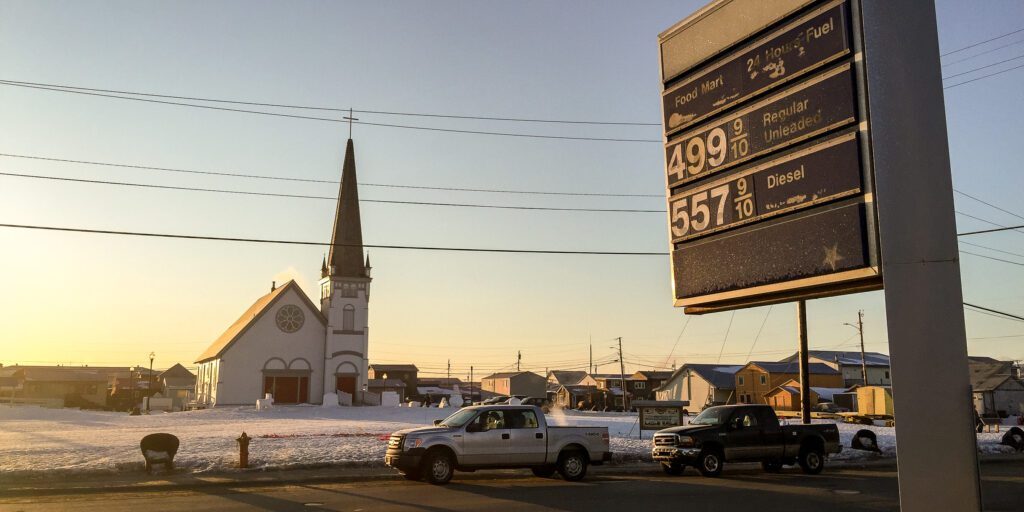A fundamental reason that KNOM Radio Mission exists is in response to the profound uniqueness of rural, Western Alaska. It’s a uniqueness that we celebrate daily through the vibrant culture, storytelling, and music of our region. But that uniqueness, too, is sometimes manifest in the exceptional challenges in our corner of the world, whether because of its isolation and remoteness; its extreme climate; its high rates of issues like domestic violence, alcoholism, and suicide; or its exceptionally high cost of living.
To illustrate this final point, let’s compare a handful of staple groceries and other basic expenses, at their cost in Seattle, Washington, and their counterpart prices in Nome, Alaska. We’ll start with the groceries pictured below: per-pound prices for apples and tomatoes; a large box of generic corn flakes; a half-gallon of (2%) milk; a dozen large eggs; and a large loaf of generic bread. As you can see in the table below — and in the actual Nome receipt for the items pictured — the costs for these basic groceries are double, triple, or even quadruple their Lower-48 equivalents.
The price differences are staggering for basic energy costs, too. Nome’s gasoline prices, as pictured, are easily double or triple those of the Lower 48 ($4.99/gal. vs. $2.19 in Seattle). And for a business like ours, kilowatt-hour electricity costs are five times as high: 34.6 cents/kWh versus 7.2.
Why are Alaska’s costs so high? Our remote location is a big part of the answer. Nome — like all of the communities KNOM serves — is not part of Alaska’s road system, which means that groceries must be shipped via cargo airplane flights (or via ocean barges, during the warmer months when the Bering Sea is not frozen). It’s a similar situation for our electricity and fuel needs. Rural Alaska’s gasoline, diesel, and heating fuel shipments are all made in bulk during the summer, when barge transportation is possible, which means that the price of gasoline and similar fuels is set for the entire year and is not prone to the recent drops in gas prices seen in the Lower 48 (or even in Anchorage or other road-system communities in Alaska).
Our local electricity supply is, similarly, affected by our remoteness. Rather than being part of the massive power grid of Lower 48 or southeastern Alaska communities, Nome’s power grid is completely isolated and self-contained, sustained by local generators and, to a limited extent, by wind and solar power. This makes our electricity far more expensive; even small homes in Nome tend to have monthly utility costs of several hundred dollars. For a business like KNOM, of course, with power-intensive needs such as two radio transmitters and a studio full of microphones, sound boards, and computers, these electricity costs are far greater: about six to seven thousand dollars per month.
Alaska’s high cost of living thus not only affects the people whom KNOM serves — especially those in rural villages, where costs are almost always even higher than in Nome — but also our own staff and volunteers, both within the office and at home. It’s why we do all we can to most wisely stretch every dollar we receive — and why we’re so grateful for your continued support, whether financial or spiritual.






